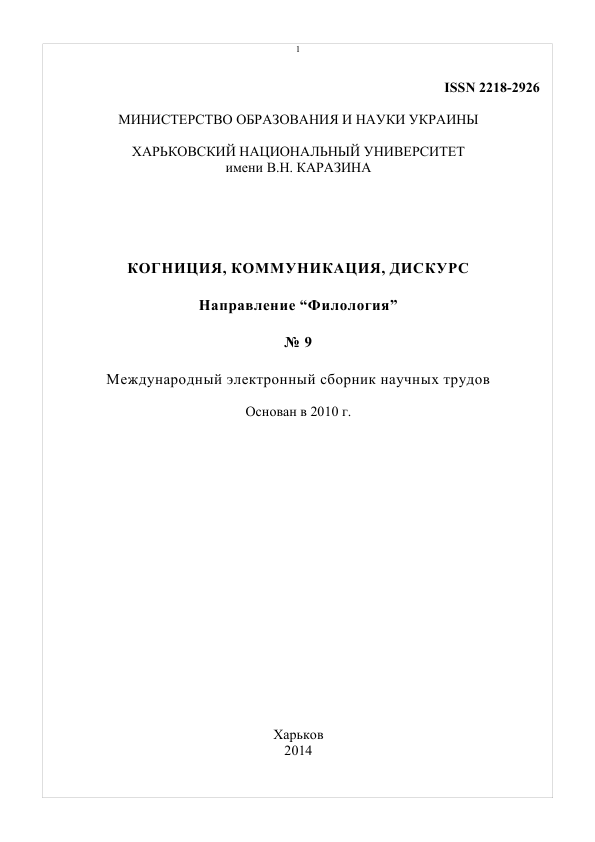“Armenian” and “Turk” as Cognitive Concepts
Abstract
The focus of the present article is the fabricated nature of some denialists’ interpretations of the Armenian Genocide brought out by the theory of frame – a reliable instrument widely applicable in cognitive linguistics. Referring to the information accumulated and stored in the memory of humanity and actually reflected in different dictionaries, literary works, official correspondence and documents, the author draws the readers’ attention to the background significance of the concepts Armenian and Turk in the cognizance and evaluation of the genocidal events in Western Armenia at the beginning of the 20th century.
Downloads
References
Fillmore, Ch. (1982). Frame semantics. In: The Linguistic Society of Korea (ed.). Linguistics in the Morning Calm. Seoul: Hanshin Publ. Co., pp. 111-137
Gasparyan, S., Harutyunyan, G. and Gasparyan, L. (2012). Hayots tsegha-spanutyan artsartsumneri lezvachanachoghakan yurahatkutyunnery [Linguo-Cognitive Peculiarities of the Armenian Genocide Studies] // Lraber hasarakakan gitutyunneri, no 1(633). Yerevan: Gitutyun Press of RA NAS, pp. 184-189
Kubr’akova, E.S. (1994). Paradigmy nauchnogo znani’a v lingvistike i yeyo sovremennyy status [Paradigms of scientific knowledge in linguistics and its current status]. Moscow: RAN Publ.
Kubr’akova, E.S., Dem’ankov, V.Z., Pankrats, U.G. and Luzina, L.G. (1997). Kratkiy slovar’ kognitivnykh terminov [Concise dictionary of cognitive terms]. Мoscow: MSU Publ.
Lewy, G. (2004). The Armenian Massacre in Ottoman Turkey: A Disputed Genocide. Salt Lake City: University of Utah Press
Longman Dictionary of English Language and Culture. (1998). England: Pearson Education Limited
Melson, R. A. (1892). Theoretical Inquiry into the Armenian Massacres of 1894–1896. Comparative Studies in Society and History, XXIV, 3 July, pp. 481-509
Minsky, M.A. (1980). A Frame for Representing Knowledge. In: D. Metzing (ed.). Frame conceptions and text understanding. Berlin, NY: Walter de Gruyter, pp. 1-25
Paronyan, Sh. (2011). Lezvachanachoghutyun yev diskurs [Linguistics and Discourse]. Yerevan: YSU Press
Shaw, S. (1976). History of the Ottoman Empire and Modern Turkey, vol. 1. Cambridge: Cambridge University Press
Suny, R. (1993). Looking Toward Ararat: Armenia in Modern History. Bloomington and Indianapolis: Indiana University Press
Suny, R., Gûcek, F. and Naimark, N. (eds.). (2011). A Question of Genocide. Armenians and Turks at the End of the Ottomann Empire. Oxford: OUP
The Shorter Oxford English Dictionary on Historical Principles, vol. 2. (1978). Oxford: Clarindon Press
Webster, N. (1981). Webster's third new international dictionary of the English language unabridged: With seven language dictionary. Chicago: Encyclopaedia Britannica [u.a.].
Authors, who publish with this journal, accept the following conditions:
The authors reserve the copyright of their work and transfer to the journal the right of the first publication of this work under the terms of the Creative Commons Attribution License (CC BY), which allows other persons to freely distribute a published work with mandatory reference to the authors of the original work and the first publication of the work in this journal.
Authors have the right to enter into separate additional agreements for the non-exclusive dissemination of the work in the form in which it was published by this journal (for example, to post the work in the electronic institutions' repository or to publish as part of a monograph), provided that the link to the first publication of the work in this journal is given.
The journal policy allows and encourages the authors to place the manuscripts on the Internet (for example, in the institutions' repositories or on personal websites), both before the presentation of this manuscript to the editorial board and during review procedure, as it contributes to the creation of productive scientific discussion and positively affects the efficiency and dynamics of citing the published work (see The Effect of Open Access).




